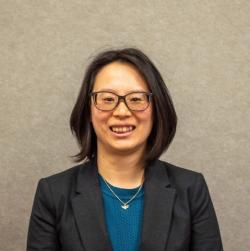Dr Yu-Shan Hung, 2022–23
Dr Yu-Shan Hung
Yu-Shan is a neurobiologist with an interest in animal sensory systems, particularly how information is processed at the cellular level and how signals from different sensory systems are integrated in the brain. She obtained her PhD from the ANU and recently completed postdoctoral research at the US National Institutes of Health where she analysed gustatory information processing in fruit flies.
What were you researching before you started as a Science Policy Fellow?
Before joining the science policy fellowship, I was at the US National Institutes of Health in Bethesda. I studied how fruit flies code taste information in their neurons – from receptor neurons to second-order neurons. To understand how the information is processed in different layers in the pathway, I worked with engineers from the instrumentation team to develop a new experimental apparatus for taste stimulation, with protocols for functional calcium imaging, patch clamp recordings and optogenetic experiments in flies.
How has your research background helped you contribute to policy development?
As a laboratory scientist, I can identify problems, look for solutions, and present them with outcomes to lab members and the scientific community. As a policy Fellow, I work within a team and use my extensive research skills to assemble evidence and use my communication skills to talk with stakeholders to understand the current status. Using my problem-solving skills, I can develop policy options, communicating them clearly to policymakers.
How has the program changed your career aspirations?
Six months into the Fellowship, I can see many positions/opportunities within the APS where I could use my training as a scientist and contribute to public policy.
What is your favourite part about working in a policy role in the Australian Public Service?
I enjoy developing evidence-based assessment frameworks and incorporating the findings into policy projects. It is also very satisfying when the policy options and the evidence are nicely aligned.

